Introduction
Specifications and Features
With the original Sony A7R mirrorless camera offering a related sensor and therefore similar performance to the much larger and heavier Nikon D810 SLR, it’s perhaps unsurprising that the update to that model, the Sony A7R II, is one of the most talked-about models of the year. Although the body is a little bigger (and more durable) than its predecessor, the A7R II has potentially a lot more to offer.
Along with an increase in pixel count to 42-Mpix, the full-frame sensor is the first of its kind to feature backside illuminated (BSI) architecture for improved low-light performance. As a consequence, the larger pixels not only gather more light, but in theory they also reduce the effects of shading and color shifts at the periphery of the frame. This is particularly so when mounting lenses that project highly oblique light rays (such as short focal length rangefinder lenses).
More room for larger pixels and more electronics means Sony has boosted the number of dedicated on-chip PDAF pixels. It now features 399 phase-detect points (plus 25 contrast-detect points) that should aid AF performance, particularly with A-mount lenses when used with the relevant adapter. In addition, the sensor is now mounted on a stabilized platform and offers compensation for vibration along 5 axes at up to 4.5 stops (CIPA standard). High-speed architecture and a powerful Bionz X-type processor allows UHD 4K (3840x 2160) video capture in Super 35mm crop or full-frame mode at 30/25/24 fps, and at high bit-rates up to 100Mb/s.
Although we’re principally concerned with the sensor dynamics here at DxOMark — and the sensor spec is impressive — the camera features an improved shutter design with greater durability and lower vibration. It also features an electronic front-curtain feature to further reduce the effects of vibration, as well as a fully-electronic silent shutter option. Also upgraded is the built-in finder. It’s now a 2.36M-dot OLED type with a 0.78x magnification. At the rear, the A7R II has new 3.0” 1.3M-dot tilting LCD with increased brightness and more accurate color using RGBW pixel layout. Both display zebra- and focus-peaking, plus there’s a 3.5mm microphone jack and same-size headphone socket with a real-time levels display. Finally, built-in WiFi connectivity with NFC allows live view and camera control with mobile devices.
The Sony A7R II measures 5.0 x 3.8 x 2.4” / 126.9 x 95.7 x 60.3mm and weighs 22.05 oz / 625g. It is available now at around $3,200 (USD).
- 42-Mpix full-frame R Exmor R BSI CMOS sensor
- Built-in 5-axis stabilization platform
- 399 on-chip phase-detect points
- ISO102,400 and EFC (electronic front curtain)
- Reduced vibration shutter
- Bionz X image processor
- Continuous shooting up to 5 fps.
- 2.36M-dot OLED EVF
- 3.0-inch 1.3M-dot tilting LCD
- UHD 4K video at 30/25/24 fps, HD up to 60 fps
- Built-in WiFi with NFC
The new leader in the DxOMark database
With an overall DxOMark score of 98 points, the Sony A7R II achieves the highest marks for performance of any sensor that we’ve seen to date, albeit by the narrowest of margins. It displaces the previous best-performing model, the Nikon D810, by just one point.
While that is negligible in real terms, and within the margin of error statistically, given the increase in pixel count and the inclusion of on-chip phase-detect pixels and associated electronics, this remains an impressive result.
Sony A7R II vs. Sony A7R: Lower noise levels bring improvements in Low-Light ISO and Color Depth
With 26-bit color depth at base compared with the 25.6-bit color of the earlier 36-Mpix A7R, the new sensor has improved discrimination as a result of lower noise levels.
An even greater divergence can be seen at higher ISOs. Dynamic range is slightly lower than its predecessor at base; however, the difference is minimal and, as with color sensitivity, the improvement in noise levels apparent at higher ISO settings translates into an impressive increase in dynamic range at these settings, particularly between ISO 1600 and 6400. The A7R II also achieved close to a half-stop (+0.5 Ev) improvement in our low-light ISO score.
Sony A7R II vs. Nikon D810 vs Canon EOS 5DS: Significant improvement in DR at high ISOs
The announcement of the Sony A7R II follows the recent introduction of the Canon EOS 5DS, an impressive addition to the market, with a full-frame sensor boasting 50-Mpix. However, with an overall DxOMark sensor score of 87 points, while very good (particularly at high ISOs), it is still some way behind the class-leading 36-Mpix Nikon D810 at low ISOs.
In our tests, the high scores of the Nikon at base compare favorably with the new Sony; however, the A7R II still has the lowest noise levels between the two models. Despite that, Sony hasn’t been able to leverage any increase in DR at low ISOs.
This gives the D810 a +0.5 Ev advantage in DR at ISO 50 and a slight benefit at ISO 100; however, the Sony’s lower noise floor results in the A7R II achieving a significantly wider dynamic range at high ISOs than the D810 (and hardly surprising, given that the sensor is related to that found in the original A7R). In fact, at high ISOs the Nikon performs similarly to the Canon EOS 5DS.
The Sony’s superior handling of noise can also be seen in our low-light ISO score of 3434 ISO (that assumes a SNR of 30dB and a DR of at least 9 Ev, and color sensitivity at 18 bits). That’s still only around a +0.3Ev advantage over the Nikon D810 and only just noticeable in real-world use, but it is progress nonetheless.
Conclusion
As the first model to introduce a rear-illuminated full-frame sensor — just one of a long list of upgrades that must count as one of the most impressive feature sets in recent times — it’s not difficult to see why the Sony A7R II has caught the imagination of photographers around the world.
However, while the camera’s handling and other aspects of performance are obviously important, our conclusions, as always, are based predominantly on sensor performance. (For a discussion of the handling and other aspects of the camera’s performance, we suggest heading over to our friends at DPReview.)
In short, the Sony A7R II has the most impressive sensor performance that we’ve seen to date. Not only has Sony increased the pixel count over its predecessor the A7R, and that found in the rival Nikon D810, the company has increased the sensor’s low-light capabilities (color sensitivity and dynamic range) while maintaining similar dynamics at low ISOs.
Not only does this epitomize a significant advance over existing proprietary designs, but it also represents a serious challenge to Canon, whose full-frame sensors matched recent Sony models in performance at high ISOs.


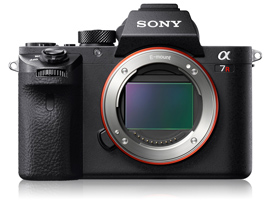



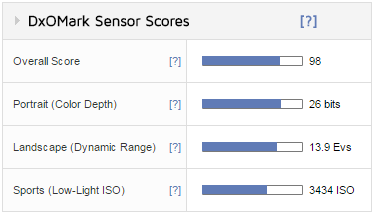
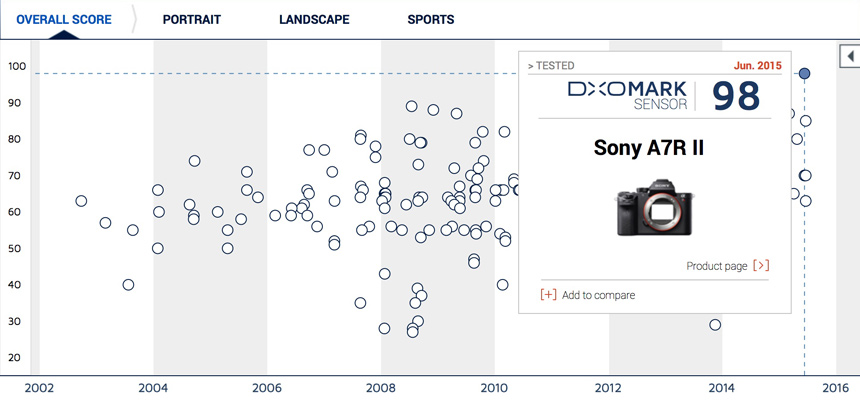
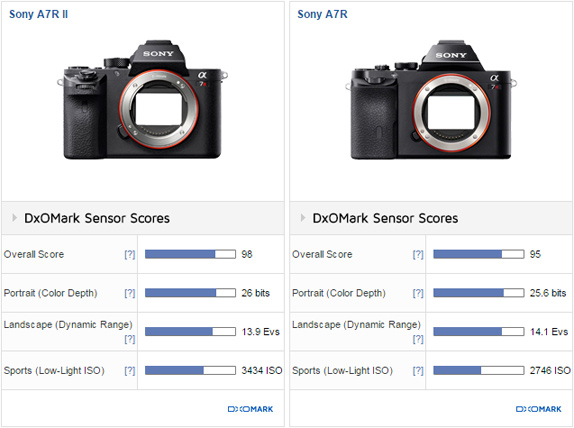
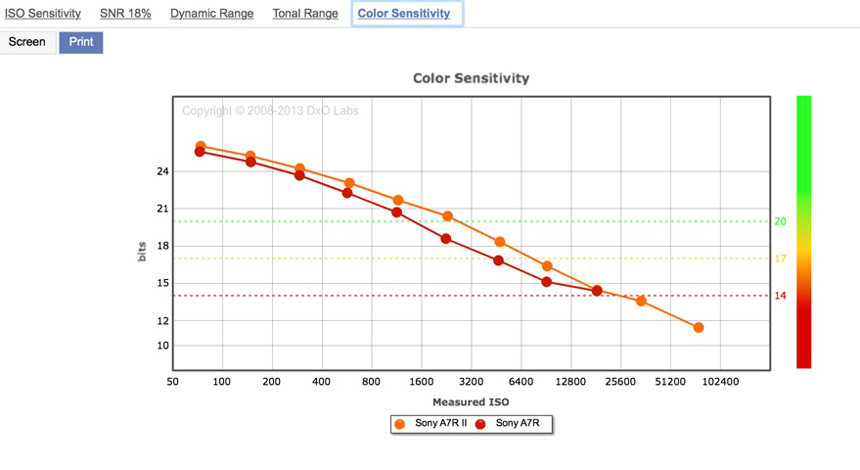
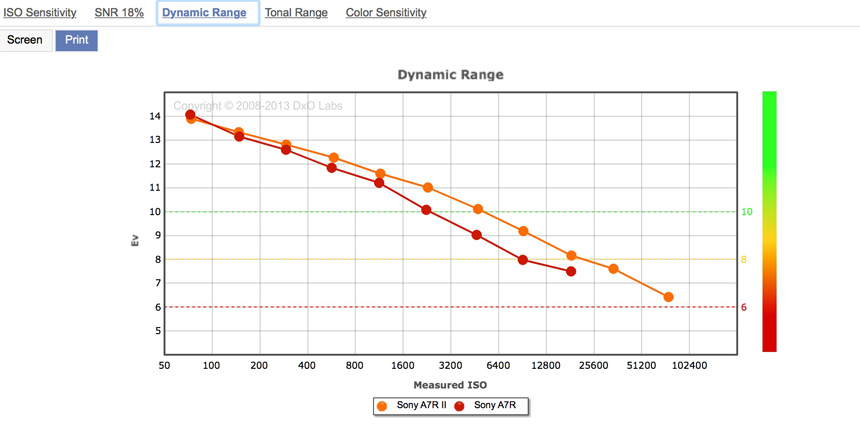
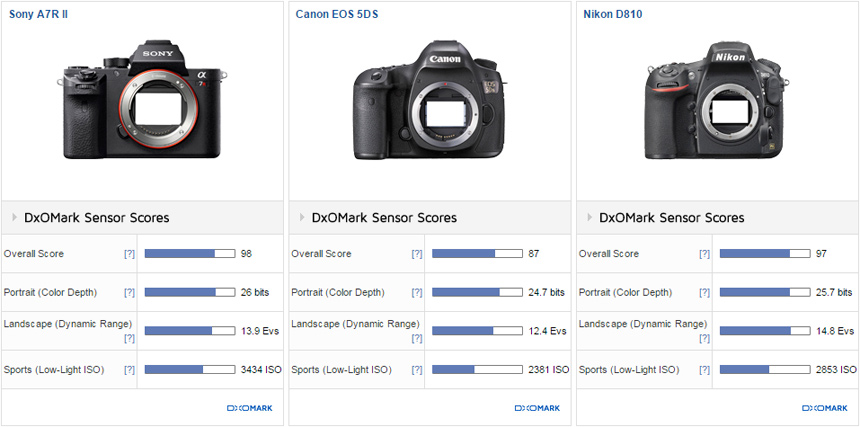
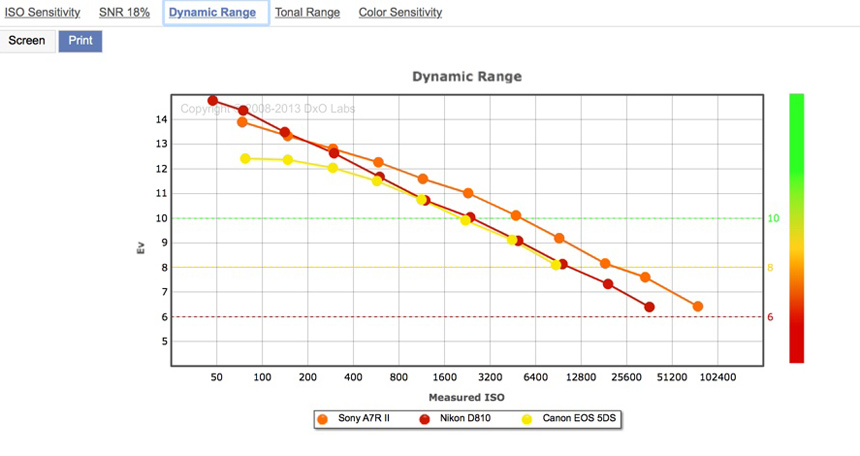


DXOMARK encourages its readers to share comments on the articles. To read or post comments, Disqus cookies are required. Change your Cookies Preferences and read more about our Comment Policy.